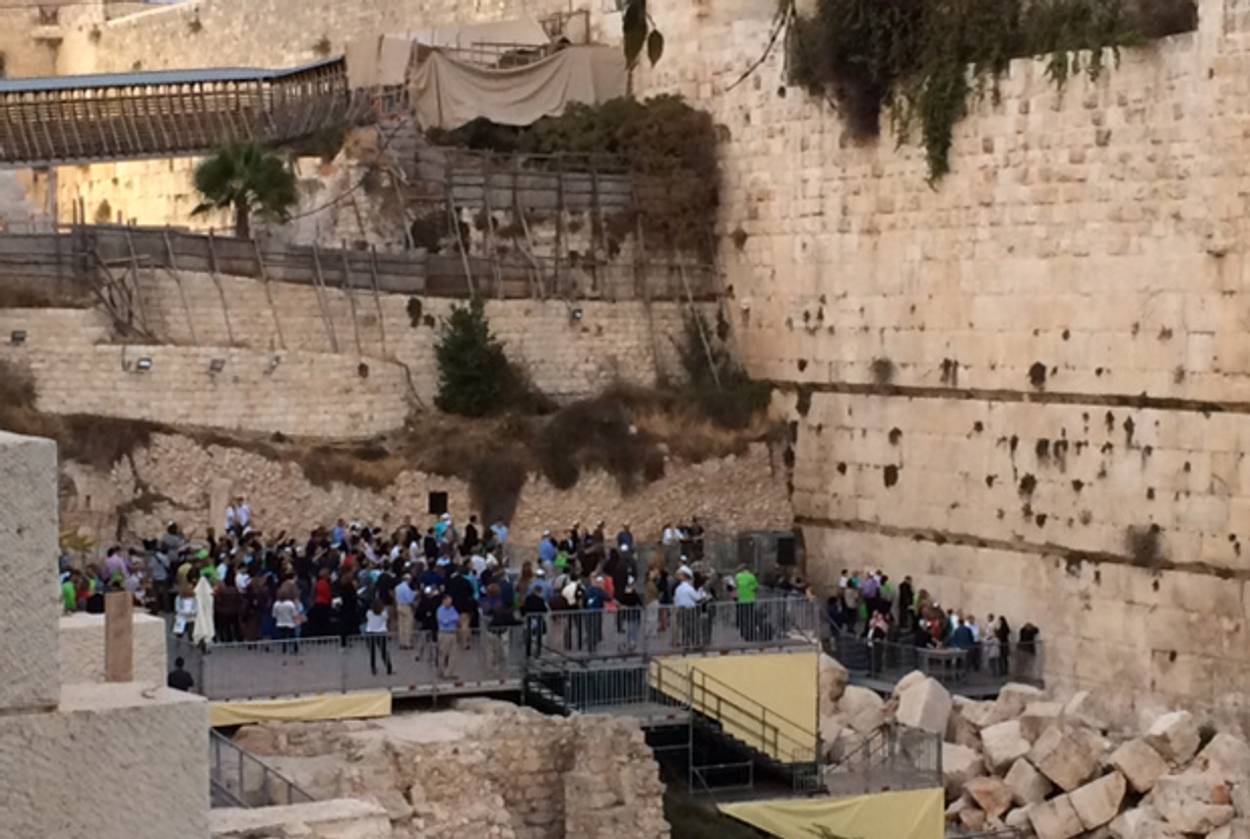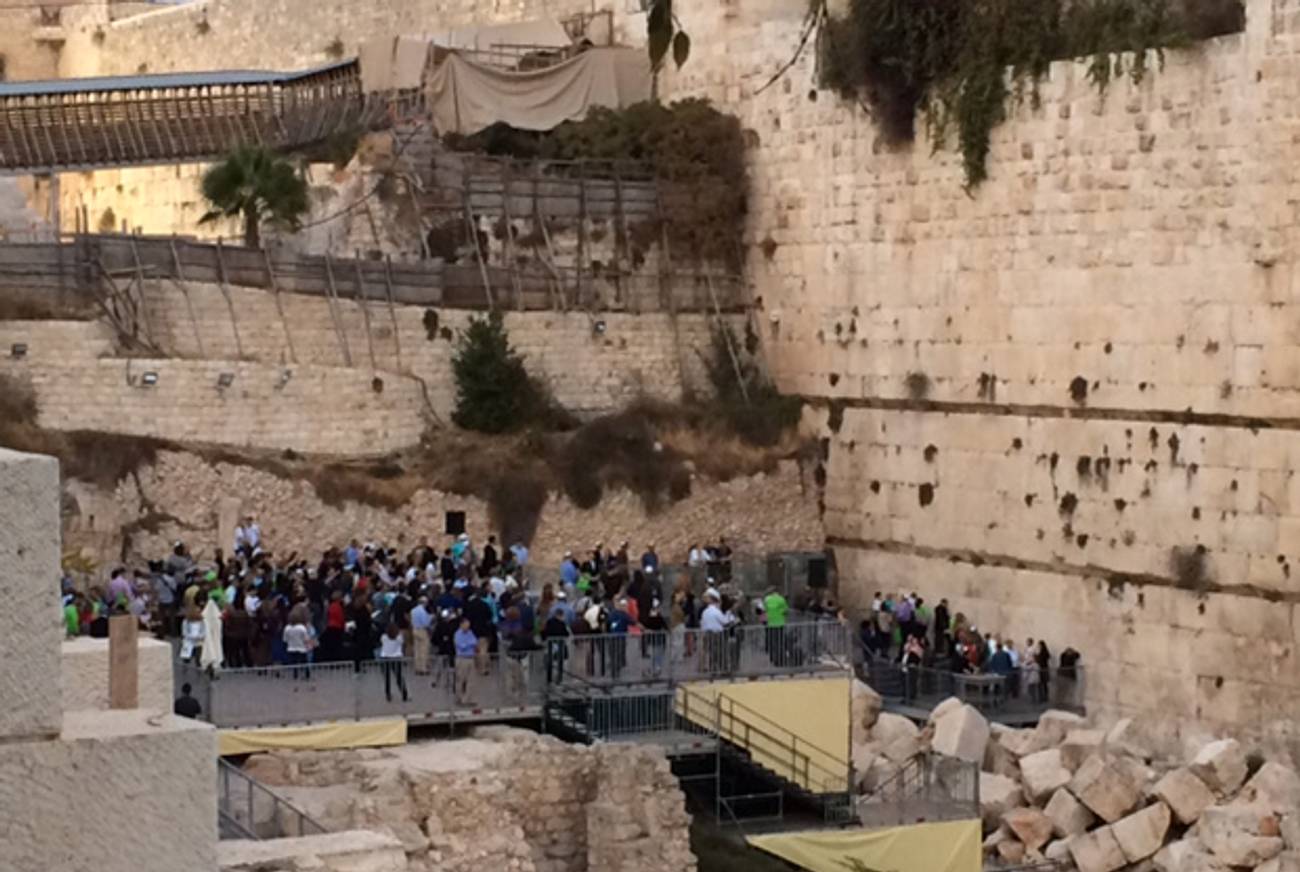The View From the Kotel’s Egalitarian Plaza
How the new structure advances the debate over prayer at the Western Wall




The opening of a new egalitarian plaza next to the Kotel has created the possibility of compromise over how to accommodate all forms of prayer at the Western Wall. Although the plaza is only temporary, liberal Jews see in it the potential to break the decades-old Orthodox control of the holy site.
The Western Wall, the last standing retaining wall of the Second Temple, was first made accessible to prayer in 1967, when the Israeli army conquered East Jerusalem and the West Bank from Jordan. It is one of Judaism’s holy sites. Prayer there is under control of Orthodox rabbis, who uphold strict gender segregation and adherence to traditional prayer ritual.
Liberal Jews have long complained that Orthodox control obstructs their right to pray freely at a public site. In 1988, Women of the Wall was formed to hold monthly prayers at the Kotel, with women praying out loud and wearing skullcaps and phylacteries traditionally worn by men—all prohibited by the local regulations. The women were often arrested by police and harassed by ultra-Orthodox protesters.
Last December, the issue came to a head when police arrested four women for wearing tallitot at the wall. They were released, but the event was so unpleasant that Prime Minister Benjamin Netanyahu appointed a committee to resolve the issue, chaired by Jewish Agency head Natan Sharansky. The women’s cause gained momentum in April 2013, when the Jerusalem District Court ruled there was no injunction against women praying and wearing tallits at the holy site.
One of the ideas devised by Sharansky’s committee was to build an egalitarian plaza at the site of Robinson’s Arch, an archaeological site against the wall but in a separate area. In August, amidst debates over how to create that space, Economy and Trade Minister Naftali Bennett ordered a raised wooden plaza built at the site.
“The Kotel [Western Wall] belongs to all Jews, all over the world, no matter what stream of Judaism they come from,” Bennett said at the time. He said the plaza was a temporary solution to accommodate visitors during the High Holidays, but it opened discussion over whether it should become the main place for egalitarian prayer year-round.
At first, Women of the Wall’s Anat Hoffman scoffed at the plaza, calling it “a sunbathing deck” and “a way of building a second-rate Wall for second-rate Jews.”
But others pointed to the plaza as a crack in the Orthodox monopoly. Robinson’s Arch had been a site for egalitarian prayers for the past decade, but other than during a small window of free access hours, visitors had to pay to enter. The original setup had limited space, and the Conservative movement funded the prayer books and maintenance.
The new plaza accommodates 450 people and is open at all hours, with prayer books and prayer shawls available.
Women of the Wall eventually came to support the plaza, with reservations. In a press release issued by the organization in October, Hoffman said, “For years we said that a separate section was like being thrown to the back of the bus, but we have a chance now to redesign the whole bus that treats all its passengers equally.”
Hoffman outlined a list of conditions that, if met, would make the plaza an acceptable alternative prayer space. They include government funding for the site equal to that of the Orthodox site, independent oversight of the plaza, and that visiting dignitaries and IDF soldiers be brought to the egalitarian plaza as well. Until these conditions are met, the group has pledged to continue praying in the women’s section.
Fulfilling the demands will be tricky. Orthodox opponents to change have called the women’s group American interlopers and radicals—and that was only when the group was praying at the wall, not demanding to change the control structure at the site.
On a geopolitical level, Jordanians and Palestinians say building the plaza violated status quo agreements regarding the adjacent Dome of the Rock holy site. Sharansky has pledged to find a way to engineer a plaza that will uphold the current arrangements.
Within the secular-religious divide, though, there are signs of change. On Wednesday, Women of the Wall held its monthly Rosh Chodesh prayer services at the Kotel. For the second consecutive month, Western Wall Rabbi Shmuel Rabinowitz urged Orthodox worshippers not to come to protest the egalitarian prayer service, saying, “Emotions of awe and respect should accompany a visit to the Western Wall and not antagonism.” Police spokesman Mickey Rosenfeld confirmed the prayers went smoothly, with no arrests and a quiet demonstration of about 35 people.
Related: Jew vs. Jew at the Western Wall
Previous: My Morning at the Western Wall
Daniella Cheslow is an American journalist covering the Middle East.